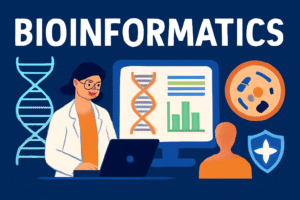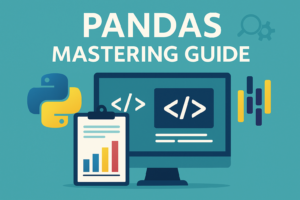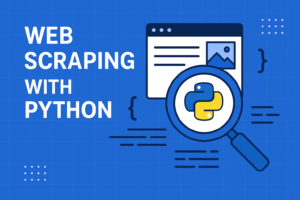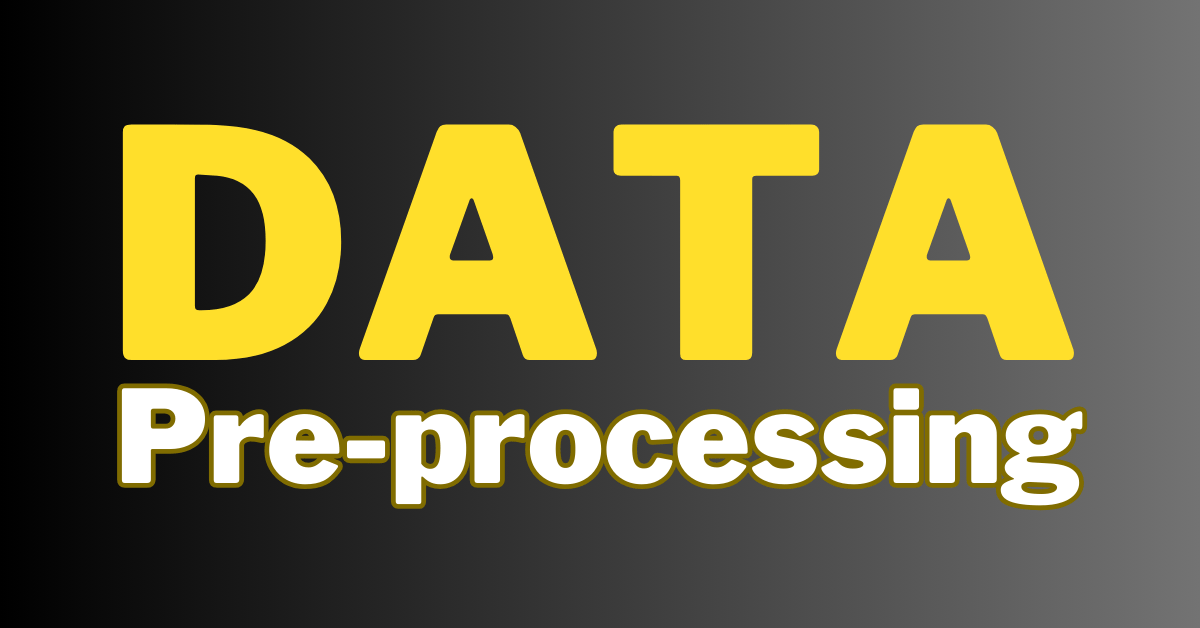Table of Contents
Introduction
In the realm of data science and machine learning, data preprocessing is often hailed as the unsung hero. It’s the bridge that transforms raw data into a goldmine of insights. But what exactly is data preprocessing? Why is it so crucial? And how can you master its various facets? Dive in as we unravel these questions and more.
The "WH" Questions of Data Preprocessing
- What is data preprocessing? It’s the series of steps used to clean and transform raw data, making it suitable for analysis or modeling.
- Why is it essential? Garbage in, garbage out! Quality data leads to quality insights and models.
- When should you preprocess data? Before any analysis or modeling. It’s the foundational step.
- Who should be concerned with data preprocessing? Data scientists, analysts, ML engineers, and essentially anyone dealing with data.
- How is data preprocessing conducted? Through various techniques that we’ll delve into below.
Data Cleaning
Handling Missing Values
When faced with incomplete datasets, we must navigate the gaps in information with precision and strategy. Another blog explains it well. Missing values are akin to puzzle pieces lost over time, and our objective is to reconstruct the original picture as accurately as possible. To do so, we deploy various tactics:
Imputation: This method involves filling in the missing values with estimations based on the available data. A common approach is to use the mean, median, or mode of the non-missing values in a column to fill in the blanks. More sophisticated imputation models might predict the missing value using regression or machine learning techniques, considering the interdependencies between different data features.
Deletion: In some cases, it might be prudent to simply eliminate records with missing values, especially when they form a negligible proportion of the dataset. However, this method, often referred to as listwise deletion, runs the risk of bias if the missingness isn’t random. It could also result in a significant reduction of valuable data, potentially undermining the statistical power of the subsequent analysis.
Special Algorithms: Certain algorithms have inherent mechanisms to handle missing data. For instance, decision trees and random forests can split nodes using only the available data, implicitly dealing with missingness. However, the choice of such algorithms should be justified by the problem at hand and not solely by the presence of missing values.
Noise Reduction
Consider data as a raw signal — it often comes with unwanted interference. Noise reduction, then, is the process of filtering the chaos to enhance the clarity of the signal — the true information:
Smoothing: Methods like bin smoothing or regression analysis help in reducing the noise. Smoothing can be particularly useful in time-series data where rolling averages or exponential smoothing can iron out short-term fluctuations to reveal long-term trends.
Transformation: Sometimes, a transformation of the data can reduce noise. For example, applying a logarithmic transformation can stabilize the variance across a dataset, making it easier to identify the true underlying patterns in the data.
Outlier Detection
Outliers are the mavericks of data points — they refuse to conform to the norm. Their presence can be illuminating, revealing insights into complex phenomena, or they can be misleading, diverting analytical models from the path of accuracy. The detection and treatment of outliers are thus essential:
Statistical Tests: Tests like Grubbs’, Dixon’s Q test, or the Generalized Extreme Studentized Deviate test are employed to detect outliers in a dataset statistically. These tests are grounded in the assumption that the data follows a normal distribution and the outliers are the deviant points.
Proximity Methods: Methods such as clustering can also be used to detect outliers. For instance, points that do not belong to a cluster or are far from the cluster centroid can be considered outliers.
Visualization: Simple visualization techniques such as box plots or scatter plots can provide a quick and intuitive identification of outliers.
The approaches to data cleaning and specifically handling missing values, noise reduction, and outlier detection must be chosen carefully, considering the nature of the data and the analytical goals. The key is to maintain the integrity and representativeness of the dataset while enhancing its quality for more reliable and robust analysis.
Data Transformation
Data transformation is an integral part of preparing data for analysis, where the raw data is converted or consolidated into a more suitable format or structure for querying and analysis. Here’s an expanded view of the key transformation techniques:
Normalization
This technique is akin to translating different languages into one common tongue so that each variable can be understood on a comparable scale. Normalization adjusts the scale of the data without distorting differences in the ranges of values or losing information. It brings all the numerical features onto a common scale, usually within the range of [0, 1]. This is especially beneficial when the features vary widely in magnitudes, units, or range and when employing algorithms that weigh inputs equally, such as neural networks or distance algorithms like K-nearest neighbors.
Standardization (Z-score normalization)
Where normalization levels the playing field, standardization fine-tunes it for performance. By transforming data to have a mean (average) of 0 and a standard deviation of 1, standardization ensures that a feature’s values have a distribution that is approximately normal, which is a requirement for many machine learning algorithms. This z-score normalization is crucial when comparing measurements that have different units or scales and is vital in algorithms that assume a normal distribution, such as logistic regression, Support Vector Machines, and Linear Discriminant Analysis.
Binning (Discretization)
Binning is the process of converting continuous numerical features into discrete categories, like creating age groups out of individual ages. It’s a way of reducing the effects of minor observation errors—the equivalent of rounding off to the nearest number that makes sense in the given context. Binning simplifies the model by reducing the number of distinct values that the model has to manage, which can be particularly beneficial for certain algorithms that handle categorical data better than numerical data, such as decision trees.
Feature Engineering:
This is the craft of extracting more value from the existing data. Feature engineering is about creating new input features from your existing ones to improve model complexity and predictive power. It involves domain knowledge to create features that will make machine learning algorithms work better. For example, from a date, one might extract day of the week, whether it’s a holiday, or the time elapsed since a particular event. This enhances the model’s capacity to discern and exploit patterns or insights in the data, effectively giving the algorithms more nuances to work with.
In essence, data transformation is about reshaping the raw, often untidy data into a format that algorithms can more easily digest. Properly transformed data can significantly improve the efficacy and accuracy of the analytical model, leading to more reliable insights.
Data transformation is an integral part of preparing data for analysis, where the raw data is converted or consolidated into a more suitable format or structure for querying and analysis. Here’s an expanded view of the key transformation techniques:
Data Reduction
Dimensionality Reduction:
Techniques like PCA reduce the number of variables, combatting the curse of dimensionality and speeding up algorithms, while retaining most data variance.
Feature Selection:
Not all features are born equal. Some are more relevant than others. This step identifies and retains the most informative features.
Data Aggregation:
Grouping data can simplify analysis, especially when a summarized view is more relevant than granular data.
Data Discretization
Turning continuous attributes into categorical ones can be beneficial for certain algorithms. Techniques range from simple equal-width binning to more complex clustering-based discretization.
Data Integration
Data Concatenation:
With data often scattered across sources, this step unifies it into one cohesive set.
Entity Resolution:
Multiple representations for the same entity? This process resolves and consolidates them.
Feature Fusion:
Sometimes, combining features can produce a more informative representation.
Data Encoding
Label Encoding:
It’s all about transforming categorical labels into a numerical format, making them digestible for algorithms.
One-Hot Encoding & Ordinal Encoding:
These techniques further transform categorical variables, ensuring they’re in the right format for specific algorithms.
Handling Imbalanced Data
With some classes underrepresented, techniques like oversampling, undersampling, or synthetic data generation (like SMOTE) come to the rescue.
Feature Scaling
Scaling ensures that all features contribute equally, especially crucial for distance-based algorithms.
Data Exploration
Descriptive Statistics:
A bird’s eye view of data’s statistical properties.
Visualization:
From histograms to scatter plots, visual cues offer invaluable insights.
Data Validation
Ensuring data’s quality and consistency is paramount. From checking the completeness of data to ensuring its uniqueness and consistency, this step is a gatekeeper.
Temporal, Text, Spatial, & Complex Data Handling
Whether it’s dealing with time series, unstructured text, geospatial data, images, or audio, specialized preprocessing techniques are employed to handle these diverse data types.
Data Anonymization, Versioning, Feedback Loop, and Schema Mapping
These steps ensure data’s privacy, keep track of its versions, collect feedback for continuous improvement, and harmonize data schemas from multiple sources.
Example Code
Here’s the complete code snippet from start to finish, including all preprocessing techniques such as handling missing values, outlier detection, normalization, standardization, binning, feature engineering, feature selection, encoding of categorical variables, and splitting the dataset into training and testing sets. I’ll provide explanations for each part of the code.
This is just an example code which will help you to make step by step guid for data pre-processing:
import seaborn as sns
import pandas as pd
from sklearn.preprocessing import StandardScaler, MinMaxScaler, LabelEncoder, OneHotEncoder
from sklearn.impute import SimpleImputer
from sklearn.model_selection import train_test_split
from sklearn.feature_selection import SelectKBest, chi2
# Load the Titanic dataset
titanic = sns.load_dataset('titanic')
# Handling Missing Values
# Impute missing values in 'age' with the mean
imputer = SimpleImputer(strategy='mean')
titanic['age'] = imputer.fit_transform(titanic[['age']])
# Assume 'deck' has too many missing values and drop it
titanic.drop(columns=['deck'], inplace=True)
# Outlier Detection and Removal
# Detect and remove outliers in 'fare' based on the Interquartile Range (IQR)
Q1 = titanic['fare'].quantile(0.25)
Q3 = titanic['fare'].quantile(0.75)
IQR = Q3 - Q1
lower_bound = Q1 - 1.5 * IQR
upper_bound = Q3 + 1.5 * IQR
titanic = titanic[(titanic['fare'] >= lower_bound) & (titanic['fare'] <= upper_bound)]
# Normalization
# Normalize 'fare' to have values between 0 and 1
scaler_min_max = MinMaxScaler()
titanic['fare_normalized'] = scaler_min_max.fit_transform(titanic[['fare']])
# Standardization
# Standardize 'age' to have a mean of 0 and a standard deviation of 1
scaler_std = StandardScaler()
titanic['age_standardized'] = scaler_std.fit_transform(titanic[['age']])
# Binning
# Transform 'age' into three discrete categories
titanic['age_binned'] = pd.cut(titanic['age'], bins=[0, 18, 60, 100], labels=["Child", "Adult", "Senior"])
# Feature Engineering
# Create a new feature 'family_size' from 'sibsp' and 'parch'
titanic['family_size'] = titanic['sibsp'] + titanic['parch'] + 1
# Feature Selection
# Select the top 3 features that have the highest correlation with 'survived'
X = titanic[['pclass', 'age', 'sibsp', 'parch', 'fare_normalized']]
y = titanic['survived']
selector = SelectKBest(score_func=chi2, k=3)
X_selected = selector.fit_transform(X, y)
# Encoding Categorical Variables
# Convert 'sex' into a numerical format using Label Encoding
label_encoder = LabelEncoder()
titanic['sex_encoded'] = label_encoder.fit_transform(titanic['sex'])
# Convert 'embarked' into binary columns using One-Hot Encoding
one_hot_encoder = OneHotEncoder()
encoded_embarked = one_hot_encoder.fit_transform(titanic[['embarked']]).toarray()
embarked_columns = one_hot_encoder.get_feature_names_out(['embarked'])
titanic = titanic.join(pd.DataFrame(encoded_embarked, columns=embarked_columns))
# Data Splitting
# Split the data into training and testing sets
X = titanic[['pclass', 'sex_encoded', 'age_standardized', 'sibsp', 'parch', 'fare_normalized', 'family_size']]
X_train, X_test, y_train, y_test = train_test_split(X, y, test_size=0.2, random_state=42)
# Now, the dataset is ready for model training
Explanation of Each Part of the code:
Load the Titanic dataset: We start by loading the Titanic dataset using Seaborn’s built-in dataset loader.
Handling Missing Values: We impute the missing values in the ‘age’ column by replacing them with the mean age. The ‘deck’ column is dropped due to a large number of missing values.
Outlier Detection and Removal: We calculate the Interquartile Range (IQR) for the ‘fare’ column and remove any values that lie outside 1.5 times the IQR from the first and third quartiles, which are considered outliers.
Normalization: We scale the ‘fare’ column so that its values lie between 0 and 1, which ensures that the variable’s scale does not affect the algorithms that assume data is normally distributed.
Standardization: We scale the ‘age’ column to have a mean of 0 and a standard deviation of 1, which is useful for algorithms that assume data is centered around zero.
Binning: We transform the continuous ‘age’ variable into discrete categories (Child, Adult, Senior) to simplify analysis and potentially improve model performance.
Feature Engineering: We create a new feature called ‘family_size’ by adding the number of siblings/spouses (‘sibsp’) and the number of parents/children (‘parch’) and adding one (for the passenger themselves).
Feature Selection: We use the
SelectKBestmethod to select the top 3 features that are most correlated with the ‘survived’ column using the chi-squared test.Encoding Categorical Variables: We convert categorical variables like ‘sex’ into numerical format using Label Encoding, and ’embarked’ into binary columns using One-Hot Encoding, making them suitable for machine learning models.
Data Splitting: Finally, we split the data into training and testing sets, ensuring that both sets are representative of the overall distribution.
This code prepares the Titanic dataset for predictive modeling, which can now be used to train a machine learning model to predict survival on the Titanic.
Conclusion
Data preprocessing is both an art and a science. It sets the stage for all subsequent analysis and modeling. While it might seem overwhelming, understanding each step ensures that you’re well-equipped to harness the true power of your data. Remember, in the world of data, a strong foundation in preprocessing is worth its weight in gold!

Why Learning Bioinformatics is Essential for the Future of Science and Healthcare
In today’s rapidly advancing world of science and technology, bioinformatics is becoming an increasingly essential skill for students, researchers, and professionals in healthcare, biology, and data science. This interdisciplinary field is unlocking new potential in areas like genomics, drug discovery, and personalized medicine.

UAE Makes ChatGPT Plus Free for All Citizens: A Global First
In a groundbreaking move, the UAE has made ChatGPT Plus available for free to all its citizens, marking a significant step in the global AI landscape. This initiative aims to enhance access to advanced AI tools and foster innovation across various sectors in the country.

NLP Mastery Guide: From Zero to Hero with HuggingFace | Codanics
Master Natural Language Processing from basics to advanced concepts using HuggingFace Transformers. Learn text processing, sentiment analysis, and build real-world NLP applications with Python.

Scikit-Learn Mastery Guide: Complete Machine Learning in Python
Master machine learning in Python with this comprehensive Scikit-Learn guide. Learn essential algorithms, model evaluation techniques, and practical implementation for data science projects.

Pandas Mastery Guide for Data Scientists | Codanics
Pandas Mastery Guide: From Beginner to Pro | Codanics 0% 🌙 ↑ Pandas Mastery Guide: From Beginner to

Web Scraping with Python | Codanics
Web Scraping with Python | Codanics Guide Web Scraping with Python: The Ultimate Guide for Beginners & Pros

Such a nice tutorial it is!
Concise and informative.
very informative and helpful ,
Step by Step guide which easily help us to understand the complete process of data pre processing. Also the code help us to practically understand it.
AOA,
This blog is very helpful for learning about data preprocessing.
ALLAH KAREEM aap ko dono jahan ki bhalyean aata kary AAMEEN.
very will explain sir, Thank you
Well guide
sir ge
This blog very well, very well explained and very informative.
impressive guide
That’s one of the best article. We shall try to be outstanding in the world, In Sha Allah. Best Wishes Ever, Thanks
When these thirteen steps are applied to any dataset then it will prepare outstanding normalized data which can be easily transformed into ML modeling and DL Modeling. Thank you sir for right track process of EDA.
The blog was very impressive it provides every step information that is mandatory in performing EDA.
Well thought out and very well written article explaining every thing about the data pre processing in a comprehensive yet concise manner.
Very Amazing Blog .. Well Explained
Let me say this is a very good resource for EDA and Data Visualization. Help me a lot in clearing concepts. thanks for creating so amazing content
amazing blog and much informative in sequence, understandable for everyone begginers
This blog is truly a comprehensive and informative guide of data preprocessing, that covers all aspects from cleaning and handling missing values to encoding categorical data and feature scaling with code snippet.
This blog is a valuable resource for me because it covers the aspects and process of data preprocessing includes handling missing data, scaling and normalization, handling categorical data, and feature engineering.
amazing blog. it is really helpful. appreciated sir
This method of blogging is very effective for teaching both oneself and others. By writing blog posts on various topics, one can gain deeper insight while also sharing knowledge with a wider audience. It provides an impactful way to both learn and educate through sharing experiences and perspectives online.
Thumbs up
good
Reading with the practice makes the learning process more proficient. Thanks Ammar!
very nicely summed. in nut shell n to the point.
This is extremely helpful for me to preprocess any data set. Please use simple English words. Some of the words I read here that I couldn’t read or listen to earlier thanks.
This method is very good to teach us and others by writing such type of vlogs., jazak allal
Explain very well
Well explained and summarizes all the key aspects of data preprocessing.
The best comprehensive guide for Data Preprocessing
amazing blog really helpful to understand the data preprocessing, thanx